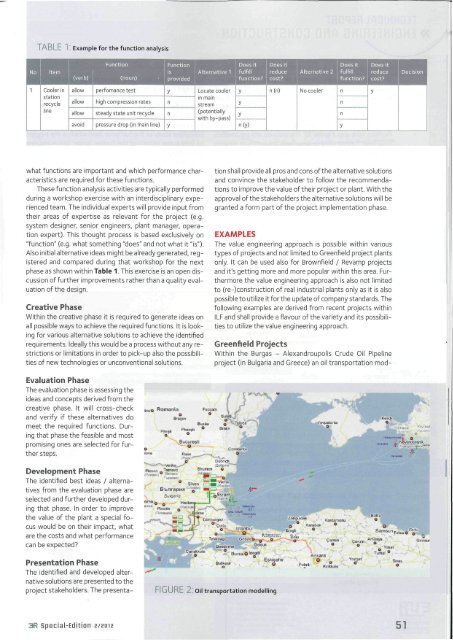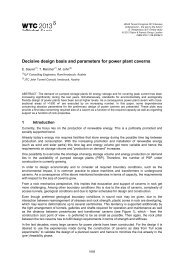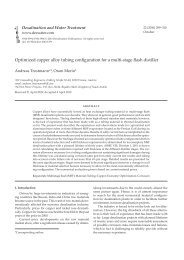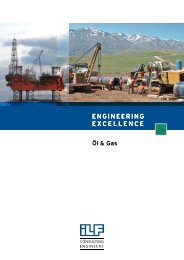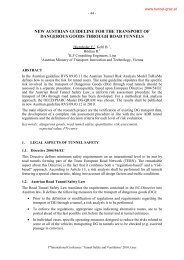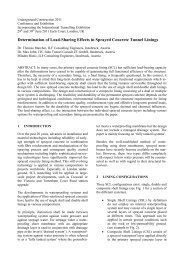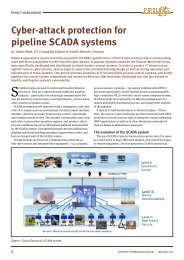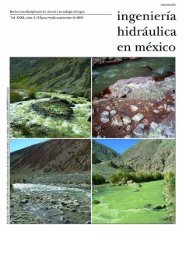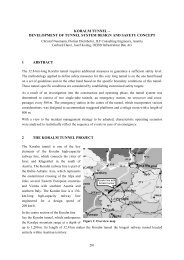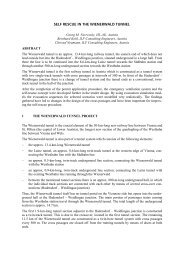Value Engineering Approach to Increase Cost Efficiency
Value Engineering Approach to Increase Cost Efficiency
Value Engineering Approach to Increase Cost Efficiency
Create successful ePaper yourself
Turn your PDF publications into a flip-book with our unique Google optimized e-Paper software.
No<br />
1<br />
TABLE 1! Example for the function analysis<br />
Item<br />
Cooler in<br />
station<br />
recycle<br />
line<br />
(verb)<br />
allow<br />
allow<br />
allow<br />
avoid<br />
Function<br />
(noun)<br />
perfomance test<br />
high compression rates<br />
steady state unit recycle<br />
pressure drop (in main line)<br />
Function<br />
is<br />
provided<br />
what functions are important and which performance characteristics<br />
are required for these functions.<br />
These function analysis activities are typically performed<br />
during a workshop exercise with an interdisciplinary experienced<br />
team. The individual experts will provide input from<br />
their areas of expertise as relevant for the project (e.g.<br />
system designer, senior engineers, plant manager, operation<br />
expert). This thought process is based exclusively on<br />
"function" (e.g. what something "does" and not what it "is").<br />
Also initial alternative ideas might be already generated, registered<br />
and compared during that workshop for the next<br />
phase as shown within Table 1. This exercise is an open discussion<br />
of further improvements rather than a quality evaluation<br />
of the design.<br />
Creative Phase<br />
Within the creative phase it is required <strong>to</strong> generate ideas on<br />
all possible ways <strong>to</strong> achieve the required functions. It is looking<br />
for various alternative solutions <strong>to</strong> achieve the identified<br />
requirements. Ideally this would be a process without any restrictions<br />
or limitations in order <strong>to</strong> pick-up also the possibilities<br />
of new technologies or unconventional solutions.<br />
Evaluation Phase<br />
The evaluation phase is assessing the<br />
ideas and concepts derived from the<br />
creative phase. It will cross-check<br />
and verify if these alternatives do<br />
meet the required functions. During<br />
that phase the feasible and most<br />
promising ones are selected for further<br />
steps.<br />
Development Phase<br />
The identified best ideas / alternatives<br />
from the evaluation phase are<br />
selected and further developed during<br />
that phase. In order <strong>to</strong> improve<br />
the value of the plant a special focus<br />
would be on their impact, what<br />
are the costs and what performance<br />
can be expected?<br />
Presentation Phase<br />
The identified and developed alternative<br />
solutions are presented <strong>to</strong> the<br />
project stakeholders. The presenta<br />
y<br />
n<br />
n<br />
y<br />
Alternative 1<br />
Locate cooler<br />
in main<br />
stream<br />
(potentially<br />
with by-pass)<br />
Does it<br />
fulfill<br />
function?<br />
y<br />
y<br />
y<br />
n(y)<br />
Does it<br />
reduce<br />
cost?<br />
n(n)<br />
Alternative 2<br />
No cooler<br />
Does it Does it<br />
fulfill reduce<br />
function? cost?<br />
tion shall provide all pros and cons of the alternative solutions<br />
and convince the stakeholder <strong>to</strong> follow the recommendations<br />
<strong>to</strong> improve the value of their project or plant. With the<br />
approval of the stakeholders the alternative solutions will be<br />
granted a form part of the project implementation phase.<br />
EXAMPLES<br />
The value engineering approach is possible within various<br />
types of projects and not limited <strong>to</strong> Greenfield project plants<br />
only. It can be used also for Brownfield / Revamp projects<br />
and it's getting more and more popular within this area. Furthermore<br />
the value engineering approach is also not limited<br />
<strong>to</strong> (re-)construction of real industrial plants only as it is also<br />
possible <strong>to</strong> utilize it for the update of company standards. The<br />
following examples are derived from recent projects within<br />
ILF and shall provide a flavour of the variety and its possibilities<br />
<strong>to</strong> utilize the value engineering approach.<br />
Greenfield Projects<br />
Within the Burgas - Alexandroupolis Crude Oil Pipeline<br />
project (in Bulgaria and Greece) an oil transportation mod-<br />
PIGURE /.'. Oil transportation modelling<br />
3R Special-Edition 2/H012 51<br />
n<br />
n<br />
n<br />
y<br />
y<br />
Decision


